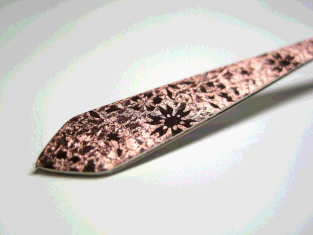Mesh screen printing

Mesh screen printing is a method of permeating ink through a sheet, called a screen, using a squeegee to move across the screen and transfer the ink. This method can be used when printing on materials other than paper, such as glass, plastic, synthetic resin, metal and fabric.
The feature of mesh screen printing is that it is good for large printing areas since it can print within the range of the screen (sheet). Ideal for flat surfaces. However, unlike PAD printing, it is not suitable for uneven surfaces. Moreover, you can create a 3D feel by using inks contains glitter or pearl, also inks that can create shrinkage and crystal effect.
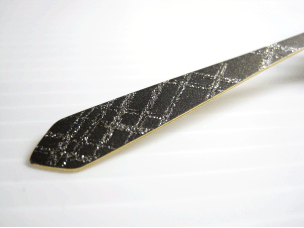
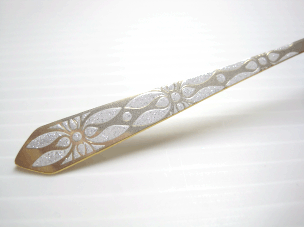

This is how mesh screen printing works.
The red part is ink. Pour the ink onto the screen (sheet) and pull it across with a squeegee to transfer the ink to the material. All printing is done by hand. It is difficult to print on uneven surfaces. When performing multicolor printing, the ink and screen need to be changed each time, much like PAD printing.
Shrunk ink printing
This is a printing technique applied to mesh screen printing, and uses UV curable ink (UV ink) to create wrinkles. The diffused reflection of light caused by these wrinkles create a sparkling finish and leather-like texture. Additionally, by adding special pearls gloss and glitters during the screen-printing stage, you can create a more gorgeous and elegant finish.
Here are some prints that combine glitters and shrinkage. (Click on the red text to see some more sample photos.) The combination of unique textures made by shrinkage and the shininess of glitter create a more luxurious finish.
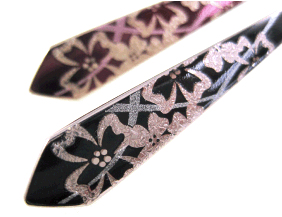
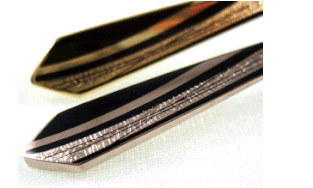
Crystal effect printing
A type of shrunk ink printing. Shrunk ink printing is a method that creates wrinkles, but crystal effect printing is a method that creates a cracked gemstone like pattern.
Click here for other crystal sample photos. (Please click on the red text.)
